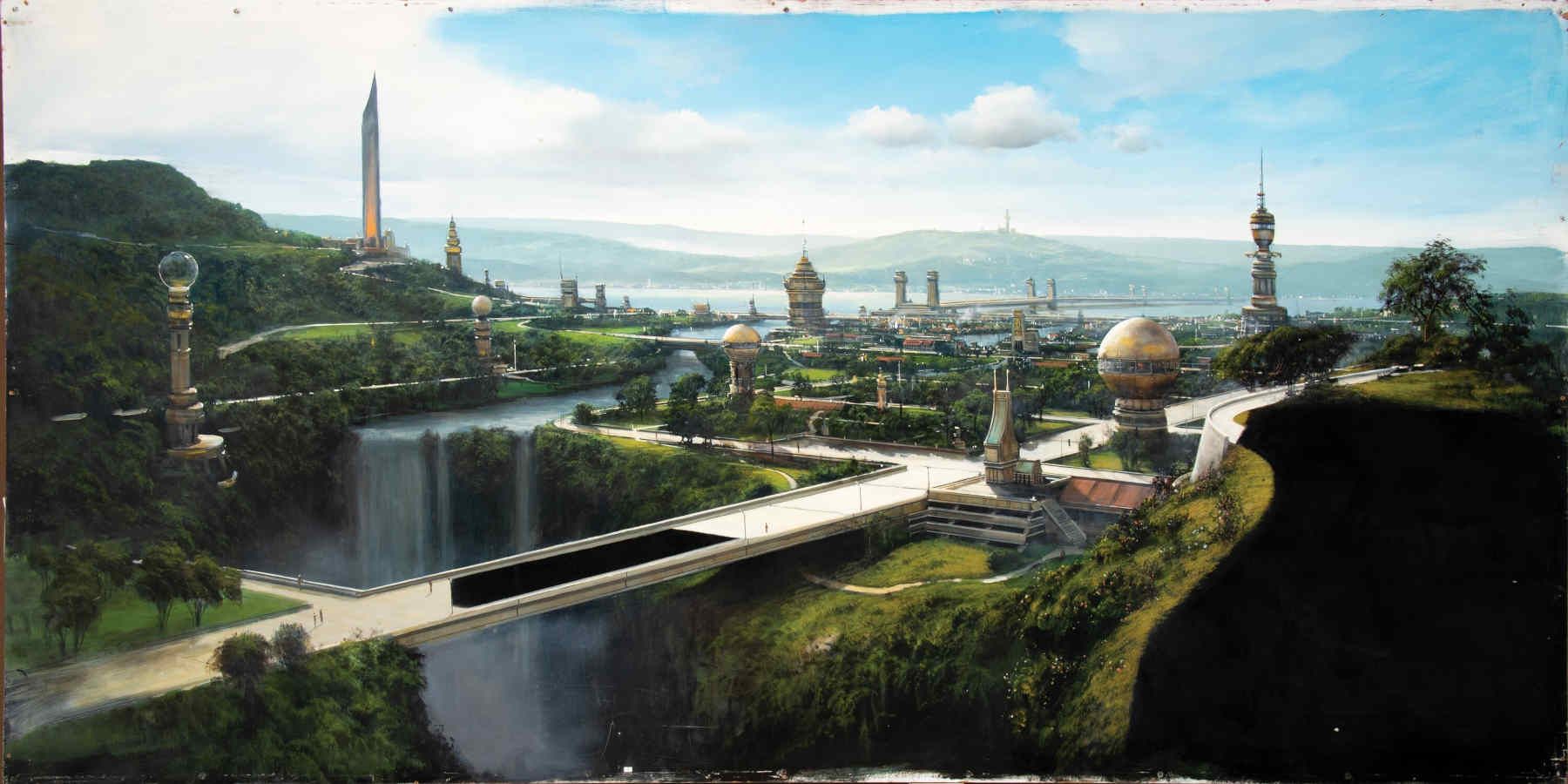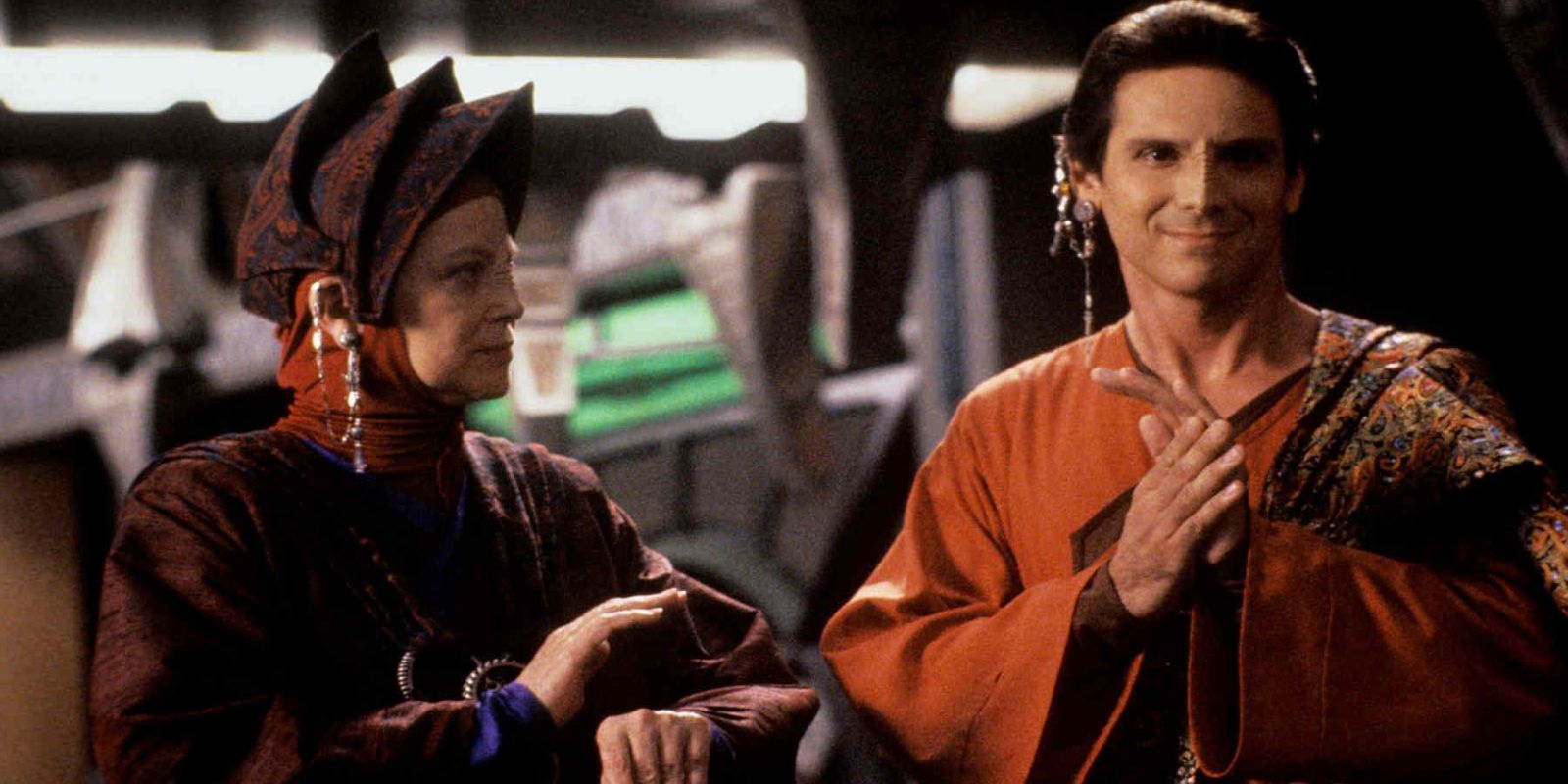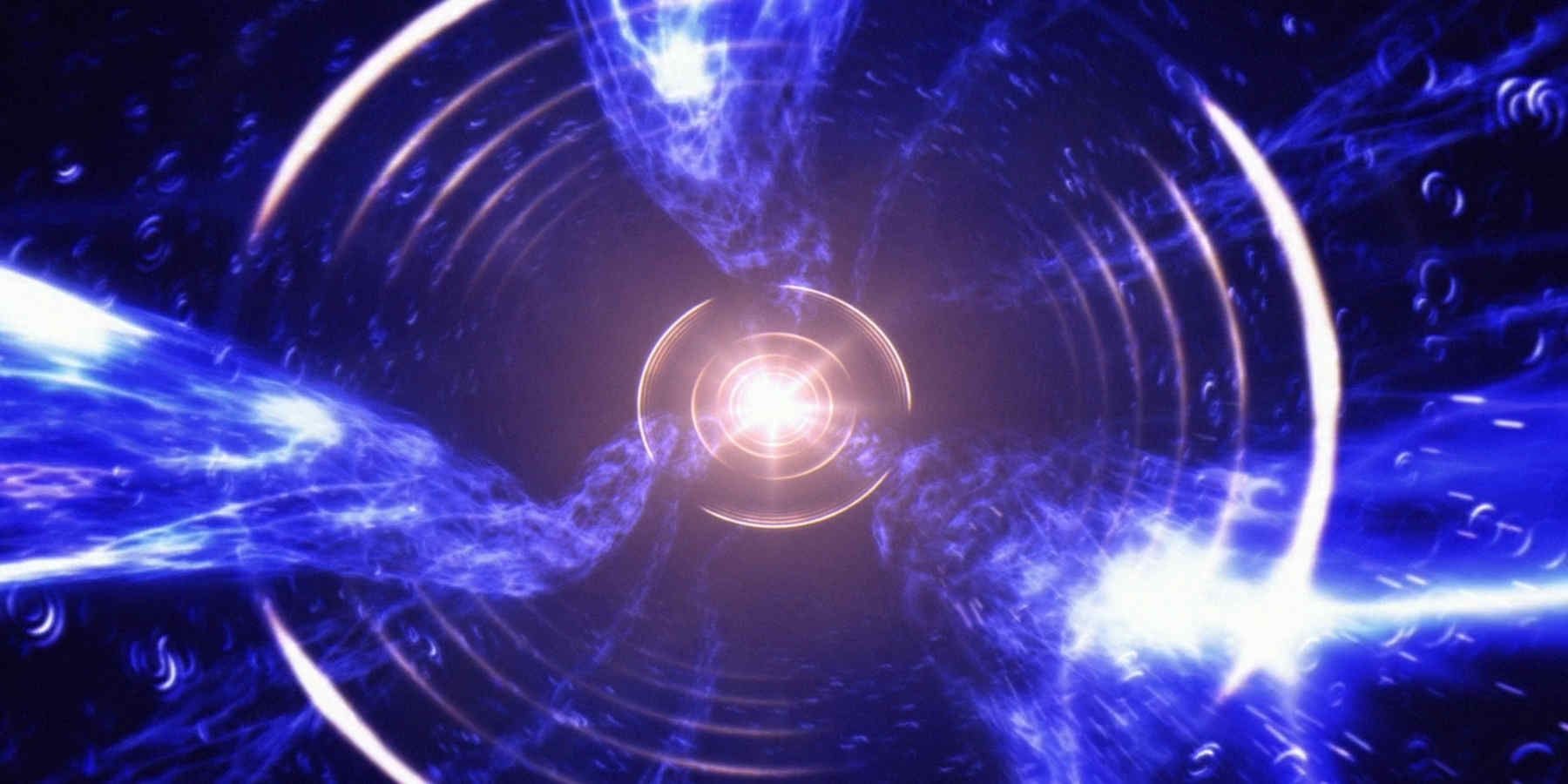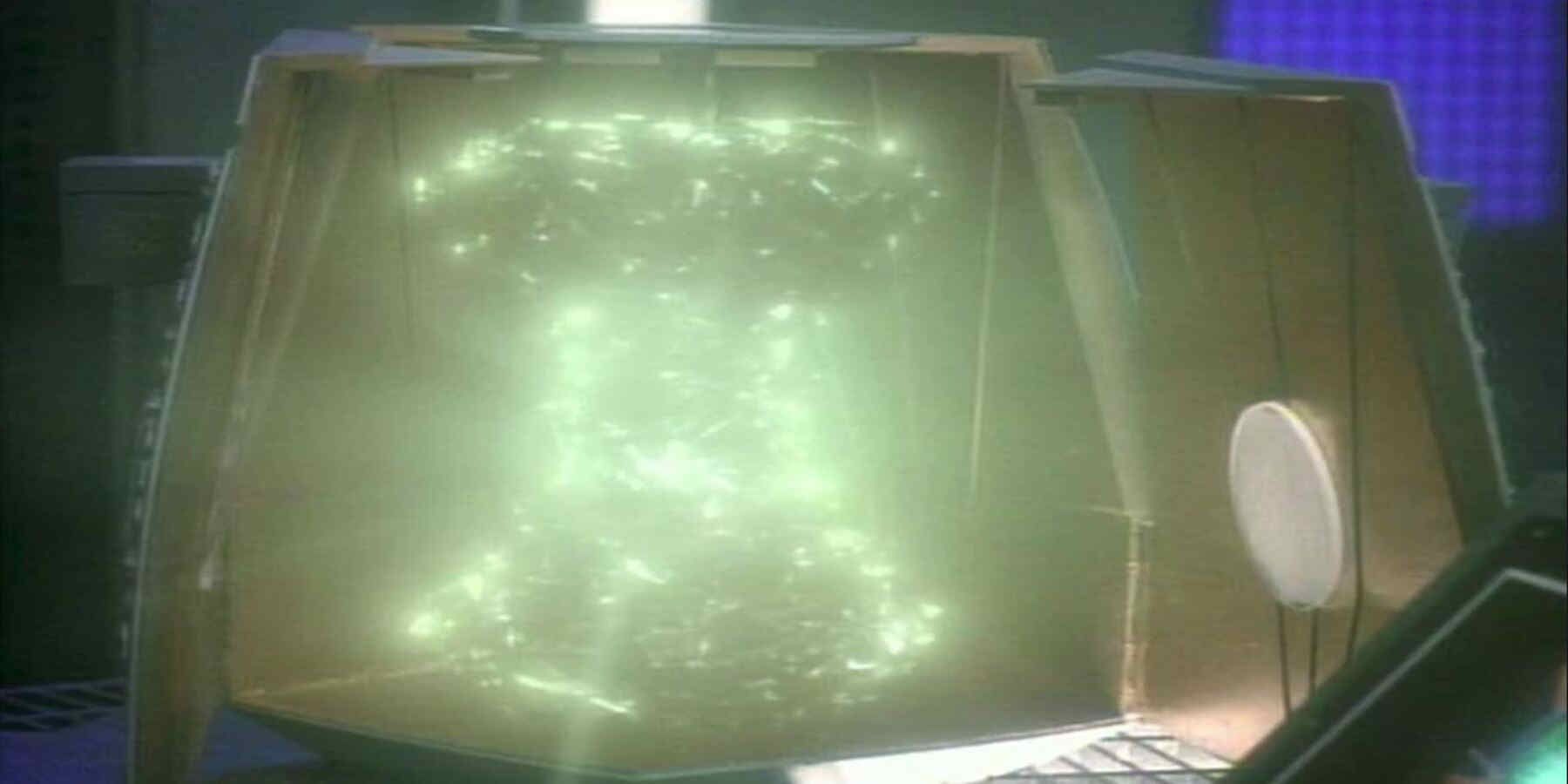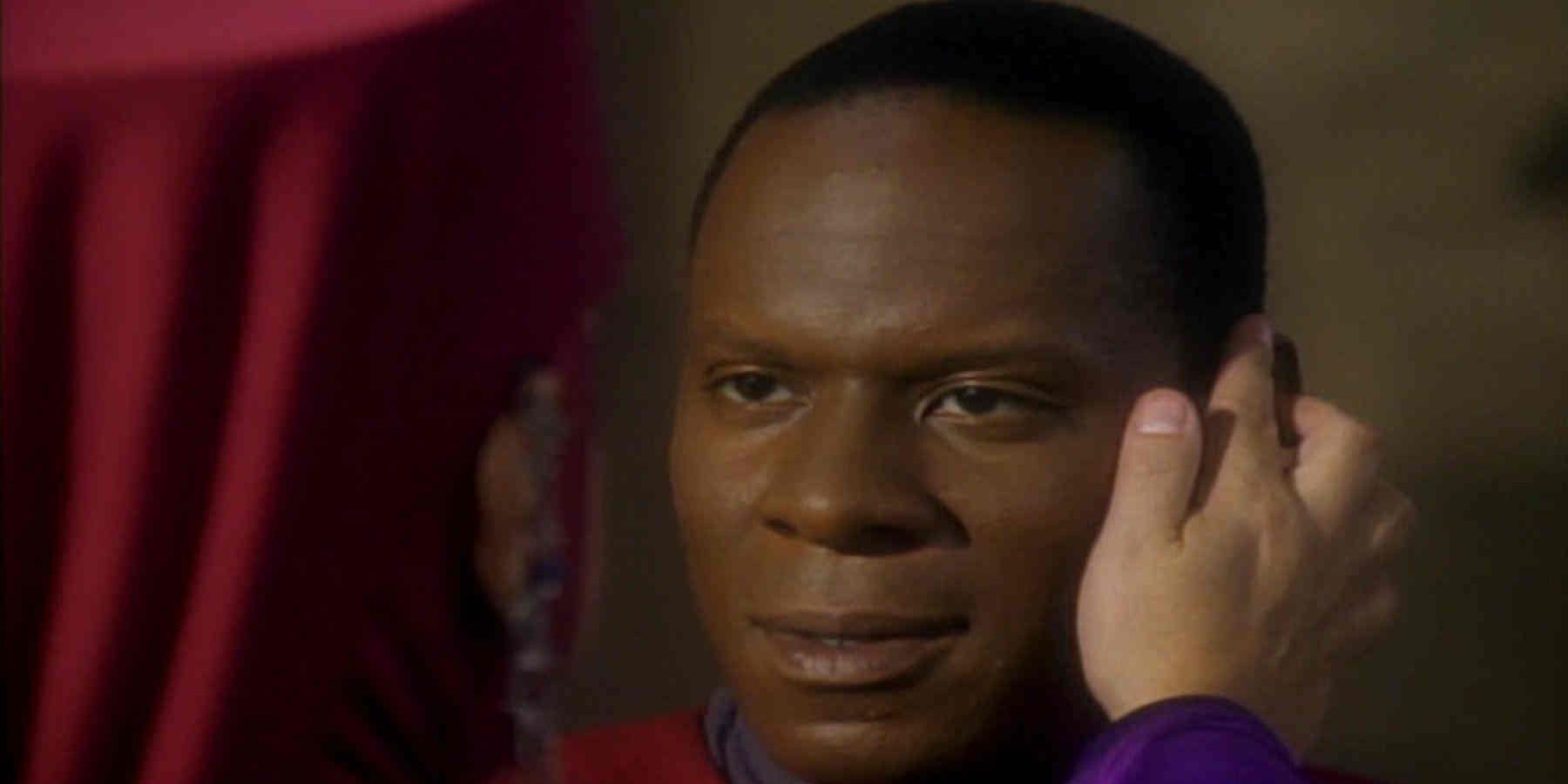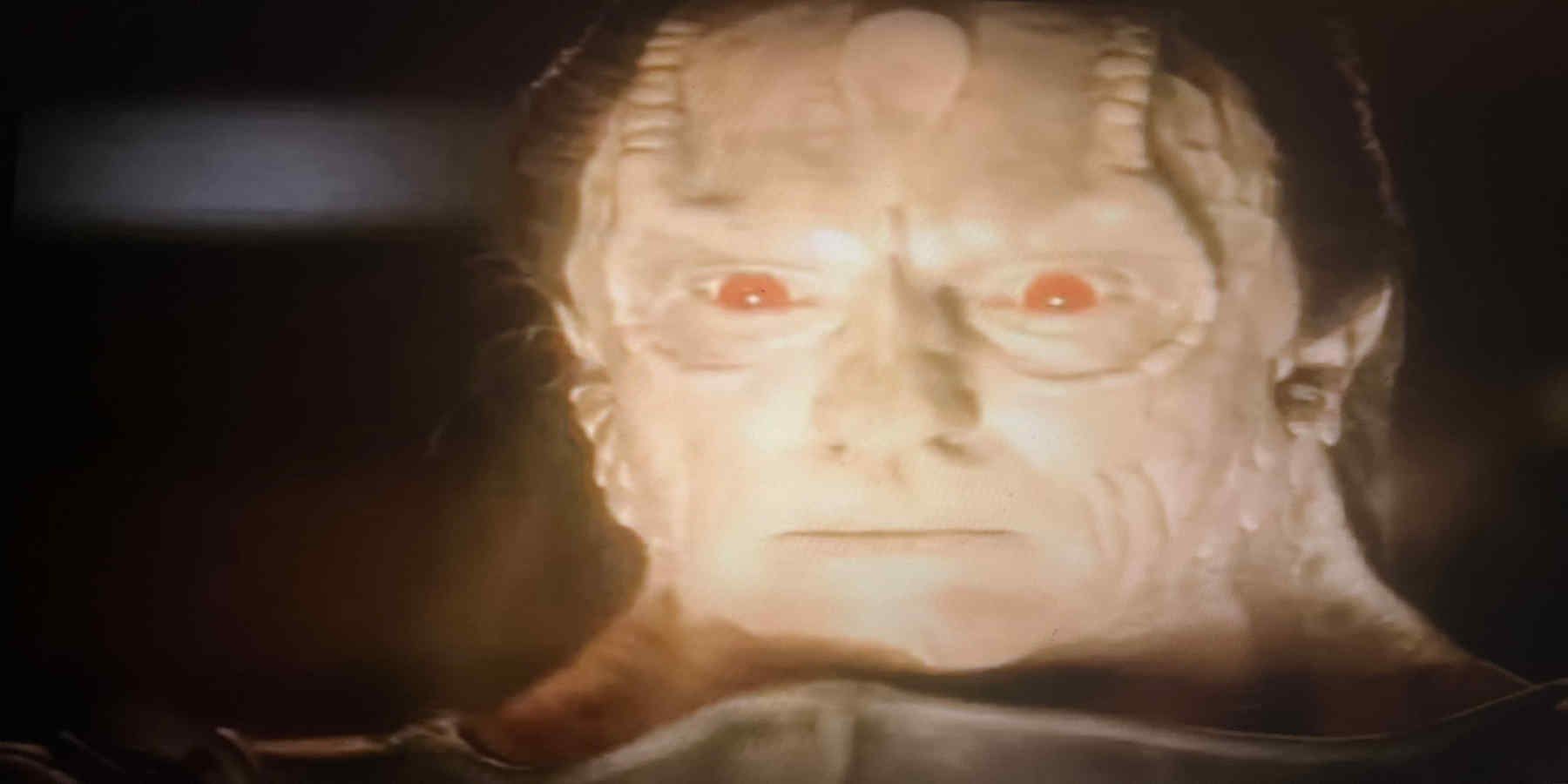In 1993, Star Trek introduced alien spirituality in the form of the Prophets. Among the Bajorans, faith was necessary for surviving the Cardassian Occupation. But religious practices were a core part of Bajor long before its inhabitants toiled under the whip of space imperialism – metaphorical or otherwise. Their dedication to believing in the goodness of others, sharing resources, and humbling themselves before a higher power stemmed from following the core tenants of the Prophets: humility, charity, and faith.
To the cynical and militaristic Cardassians, these were weaknesses to be exploited for financial gain. While humility became passive submission for some, other Bajorans forged charity and faith into the iron will to survive and cast out their oppressors. The existence of the Prophets has been debated, mostly by logic-forward Starfleet officers struggling to comprehend the social power of alien faith. But the influence of the Prophets on Bajor has been undeniable, from the strength of belief to the different types of worship. Who are these celestial beings, and how did they become essential to Bajoran culture?
Spiritual Leaders of Bajor
Many who keep the faith have a personal connection to the Prophets. Star Trek characters like Major Kira Nerys make regular trips to the Bajoran Temple on DS9, to pray or the Kenda Shrine on Bajor to pay homage to those they worship. Bajor is also home to many monasteries, one of which Major Kira left for in season 2 of Deep Space Nine. Officially, she took time from her position as a Starfleet officer while deciding if the role still fit her. Unofficially, it was the beginning of her clandestine romance with Vedek Bareil Antos (Philip Anglim) before his untimely death in season 3.
Holy events like the Days of Atonement, Gratitude Festival, Time of Cleansing, or even performing death chants are communal in nature, but one’s connection to the Prophets is an intimate affair. Those holding the titles of Kai, Vedek, Ranjen, or Prylar are vital to upholding the structure of Bajoran spirituality. The Vedek Assembly maintains archives of knowledge with the assistance of Prylar and, after the occupation, put their efforts toward building a political relationship with the Federation.
For example, Vedek Bareil often used his soft-spoken charm and social influence to mediate problems between Commander Benjamin Sisko (Avery Brooks) and Vedek Winn Adami (Louise Fletcher). The Vedek Assembly elects the Kai, who operates with the help of a Ranjen when the former passes on or is otherwise unavailable for duty. That person acts as the spiritual leader for all of Bajor. Where a Vedek is vital, the only role more important than Kai is Emissary and that’s someone in direct communication with the Prophets.
The Celestial Temple
The Kai and the Vedek Assembly are tangible. The spiritual significance of the wormhole, however, is not. Therefore, whether it's the Celestial Temple has been a source of turbulent debate throughout Deep Space Nine. Many Starfleet officers see the wormhole as a scientific wonder and the home of powerful aliens with whom Bajorans have achieved peaceful balance – much like the Kelpiens and the Ba’ul in season 2 of Discovery.
The Bajorans, however, see it as the home of the Prophets. In season 7, episode 19, “Strange Bedfellows,” Kai Winn recalls seeing it “burst into view” for the first time and feeling “the love of the Prophets” emanating from this “whirlpool of color and light” leaving her and others on the Promenade of DS9 “in awe”. Kai Winn was one of many beaten and jailed for relentlessly daring to share the teachings of the Prophets. Such a moment of connection to the Celestial Temple must have felt like sweet validation for the ways in which she and her people suffered to be faithful.
Orbs of the Prophets
Communication with the Prophets of Star Trek is as seldom as it is vague. Unless one has obtained the status of Emissary, consulting one of the 9 Orbs of the Prophets (also known as the Tears of the Prophets) is necessary to receive their wisdom and guidance. According to Bajoran legend, they appeared in the skies over a period of 10,000 years and were later placed in arks – ornate containers. But only five pop up in a variety of Deep Space Nine, episodes ranging from poignant to hilarious.
- In season 5, episode 10, “Rapture”: Captain Sisko is hit with pagh'tem'far, visions so strong he needs to consult with the Orb of Prophecy and Change to understand them.
- In season 3, episode 16, “Prophet Motive”: The Grand Negus Zek (Wallace Shawn) hilariously loses his will to make a profit after encountering the Orb of Wisdom.
- In season 5, episode 6, “Trials and Tribble-lations”: the Orb of Time sent Captain Sisko and Lt. Commander Jadzia Dax (Terry Ferrell) into the past.
- In season 6, episode 26, “Tears of the Prophets”: Gul Dukat (Marc Alaimo) waged an assault on the Orbs starting with the Orb of Contemplation while possessed by dark spirits.
- In season 7, episode 1, “Image in the Sand”: Captain Sisko is grieving the death of Jadzia in New Orleans when the Orb of the Emissary calls him back to his destiny.
The Emissary
So great was the faith of the Bajorans in the Prophets that they accepted Captain Sisko as their Emissary even as they were still rightfully bitter at the Federation’s lack of intervention during the occupation. Before her untimely death, Kai Opaka (Camille Saviola) read Captain Sisko’s pagh by rubbing his right earlobe and declared him the Emissary.
His role from that point was one of spiritual significance, as well as bringing Bajor into the Federation. It also marked the first time in Star Trek history that a Starfleet officer became so enmeshed with the alien culture they were supposed to observe from a distance. His spiritual journey from reluctance to acceptance was long and arduous. Yet, Captain Sisko showed up for the people of Bajor because he knew how important the Prophets were to them.
The Pah-Wraiths
As in all things spiritual, there is a dark side to the Prophets, and it’s the Pah-Wraiths of Star Trek. They were banished from the Celestial Temple for unnamed crimes and forced into the Fire Caves on Bajor to suffer eternal imprisonment. Their mission from that point was to punish the Prophets, and they often did so by taking possession of others, making them do their dark bidding.
They possessed Keiko in season 5, episode 5, “The Assignment,” in a failed attempt at destroying the Celestial Temple. A Pah-Wraith named Kosst Amojan possessed Jake Sisko (Cirroc Lofton) in season 6, episode 21, “The Reckoning,” in a literal battle for the soul of Bajor. Yet, the Pah-Wraith could never fully diminish or destroy the power of the Prophets. They were too strong in spirit with a will to survive to match – much like the Bajorans themselves.

